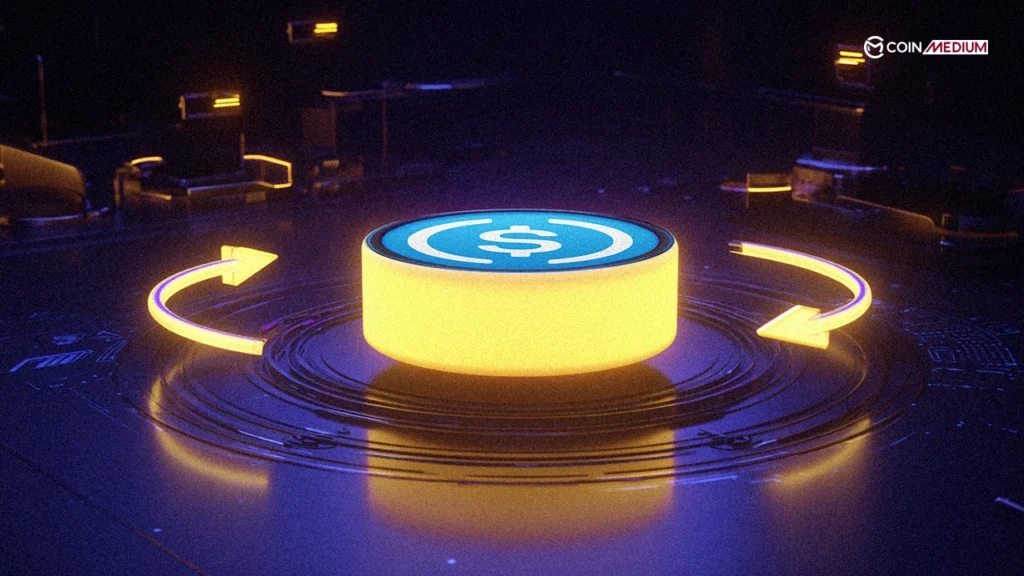Circle, the issuer of the world’s second-largest stablecoin, USD Coin ($USDC) is exploring the implementation of reversible transactions to address fraud and hacks, a move that could reshape the stablecoin landscape.
This initiative, as revealed by Circle’s president, Heath Tarbert, in an interview with the Financial Times on September 25, 2025.
Circle Building Crypto’s Foundational Ethos
The concept of transaction reversibility stands in stark contrast to the decentralized principles that define cryptocurrencies.
Blockchain technology, by design, ensures that transactions are permanent and resistant to alteration by any single entity. This immutability fosters trust in a trustless system, eliminating the need for intermediaries.
However, Circle’s exploration of reversible transactions introduces a centralized mechanism that could allow for the rollback of transactions in specific scenarios, such as fraud or cyberattacks.
Heath Tarbert acknowledged the tension between reversibility and settlement finality, stating,
“We are thinking through whether or not there’s the possibility of reversibility of transactions, but at the same time, we want settlement finality.”
This delicate balance aims to preserve the instantaneous and irrevocable nature of blockchain transactions. It also introduces safeguards to protect users from financial losses due to malicious activities.
While this approach appeal to mainstream financial institutions and regulators, it has sparked debate within the crypto community.
Enhancing Trust and Combating Fraud
Proponents of reversible transactions argue that such a feature could enhance trust in stablecoins, particularly among mainstream users and institutions. As they are hesitant to adopt cryptocurrencies due to the risk of irreversible losses from scams.
By enabling the recovery of funds in fraudulent transactions, Circle aims to make USDC a more secure and appealing option for everyday financial use.
This could pave the way for stablecoins to become a cornerstone of the legacy financial system, offering a blend of blockchain efficiency and traditional consumer protections.
A real-world example of the potential benefits of reversibility occurred in May 2025, when the decentralized exchange Cetus suffered a hack resulting in the theft of over $220 million in digital assets.
Validators on the Sui blockchain, where the exploit occurred, successfully froze $162 million of the stolen funds.
Following a governance vote, the Sui community approved the return of these funds to Cetus, demonstrating how intervention by validators can mitigate the impact of cybercrimes.
While some criticized this as undermining decentralization, others hailed it as a pragmatic response to the growing threat of hacks in the crypto industry.
Borrowing from Traditional Finance
Circle’s exploration of reversible transactions reflects a broader trend of integrating traditional finance features into blockchain technology.
Tarbert emphasized that blockchain and stablecoins offer superior technological advantages such as speed, transparency, and cost-efficiency. However, certain aspects of traditional finance could enhance their functionality.
“There are some benefits of the current system that aren’t necessarily currently present,” he noted.
This approach aligns with Circle’s broader strategy to position USDC as a bridge between decentralized finance (DeFi) and institutional finance.
In August 2025, Circle announced the development of Arc, a new layer-1 blockchain designed to provide an “enterprise-grade foundation” for stablecoin payments, foreign exchange, and capital markets applications.
Arc, which uses USDC as its native gas token, is set to launch as a public testnet in fall 2025, with a full rollout planned by the end of the year.
The blockchain will integrate with Fireblocks’ digital asset custody and tokenization platform, enabling banks and asset managers to access Arc’s infrastructure from day one.
Implications for the Crypto Industry
Circle’s push for reversible transactions and institutional-grade infrastructure signals a maturation of the stablecoin sector, as it seeks to align with regulatory expectations and institutional demands.








